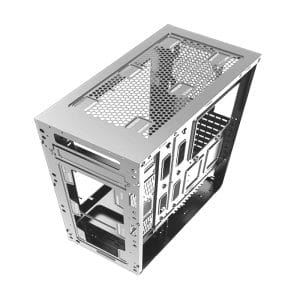Sheet metal is a common material used in a variety of industries, from automotive to aerospace. But how is it made? In this blog post, we will explore the sheet metal manufacturing process, from start to finish. sheet metal starts out as a raw material, usually in the form of a large coil. From there, it goes through a series of steps to turn it into the finished product. We will cover each of these steps in detail so that you can see how sheet metal is made and why it is such a versatile material.
What is sheet metal?
Sheet metal is a thin, flat piece of metal with a uniform thickness. It is typically used in construction, industrial, and automotive applications. Sheet metal can be cut, bent, and formed into various shapes and sizes.
There are several methods for manufacturing sheet metal, including:
1. Hot Rolled Sheet Metal: Hot rolled sheet metal is passed through rollers at high temperatures to achieve the desired shape and size. This method is often used to create large sheets of metal that can be cut or formed into smaller pieces as needed.
2. Cold Rolled Sheet Metal: Cold rolled sheet metal is passed through rollers at lower temperatures than hot rolled sheet metal. This method is often used to create thinner sheets of metal that are more precise in shape and size.
3. Extruded Sheet Metal: Extruded sheet metal is passed through an extrusion process to achieve the desired shape and size. This method is often used to create complex shapes or sizes that would be difficult to achieve with other methods.
4. Forged Sheet Metal: Forged sheet metal is heated and then pounded or shaped into the desired form. This method is often used to create strong, durable parts that can withstand high temperatures or heavy loads.
The different types of sheet metal
Sheet metal is a common term used to describe thin, flat pieces of metal. The thickness of sheet metal can vary significantly but is typically less than 6 mm. Sheet metal is often used in the construction of homes and buildings, as well as in the manufacture of vehicles and other equipment. There are many different types of sheet metal, each with its own unique properties and applications.
The most common type of sheet metal is steel. Steel is an alloy of iron and carbon, and is known for its strength and durability. Steel sheet metal is often used in the construction of bridges and buildings, as well as in the manufacture of cars and other vehicles. Aluminum is another popular type of sheet metal. Aluminum is lightweight yet strong, making it ideal for use in aircraft and spacecraft. Copper and brass are also popular choices for sheet metal, due to their resistance to corrosion.
How is sheet metal made?
Sheet metal is made by passing a piece of metal through a pair of rollers. The rollers compress the metal and cause it to become thinner. Sheet metal can be made from various metals, including aluminum, brass, copper, and steel.
The benefits of manufacturing sheet metal
There are many benefits to manufacturing sheet metal. The process is relatively simple and can be done with a variety of machines. Sheet metal is strong and durable, making it ideal for a variety of applications. It can be easily formed into complex shapes, making it perfect for use in construction or other industries. Additionally, sheet metal is easy to recycle and can be reused many times over.
The disadvantages of manufacturing sheet metal
There are several disadvantages to manufacturing sheet metal, which include:
1. The process can be quite complex and time-consuming, especially if you are new to the process.
2. There is a lot of waste generated during the manufacturing process, which can be costly to dispose of properly.
3. Sheet metal can be difficult to work with, and mistakes made during the manufacturing process can be difficult and expensive to fix.
4. The final product can be very fragile, and even small imperfections can cause it to break or bend easily.
Conclusion
Manufacturing sheet metal is a complex process that involves a number of steps. First, the metal must be melted down and formed into sheets. Next, the sheets must be cut to the desired size and shape. Finally, the edges of the sheet metal must be finished to create a smooth, professional look. While manufacturing sheet metal may seem like a daunting task, with the right tools and techniques, it can be accomplished relatively easily.



